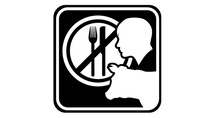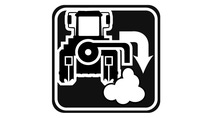Business Statements and Disclaimers
Disclaimer on Product Illustrations
All varieties shown were grown under favourable conditions. Identical results are not guaranteed nor implied for all growing conditions.
The copy rights of all illustrations on this website belong to Nunhems BV (“Nunhems”). All rights are reserved; no part of this publication may be reproduced, stored or transmitted in any form or by any means without the prior written permission of Nunhems.
Disclaimer on Genetically Modified Organisms
The seeds of varieties which are supplied to Buyer are varieties which do not qualify as varieties regulated under GMO-legislation and are not developed by using technologies of recombinant DNA or targeted genome optimization . The methods used in the development and identity preservation of these varieties are aimed at avoiding the presence of off-types, which includes avoiding the presence of material which includes recombinant DNA or material which may have been modified using targeted genome optimization.
Seed production has been carried out in accordance with production rules in the country where production took place, including stipulated isolation distances. Nunhems is committed to the proper stewardship of its products, supports and has affirmed its commitment to the Excellence Through Stewardship™ industry stewardship initiative to be found at the following website: www.excellencethroughstewardship.org. However, due to free circulation of pollen and because it cannot be excluded that material containing recombinant DNA or material which may have been modified using targeted genome optimization are cultivated by others in seed production areas, admixtures with such material cannot totally be prevented. Therefore, no guarantee can be given that the seed lots comprising this delivery are free from any traces of material containing recombinant DNA or material which may have been modified using targeted genome optimization.
Disclaimer on Variety Registrations
The Nunhems varieties listed and published on the website may not (yet) be free for sale in all countries because of local, national and international registration rules. The status of these registrations can vary day by day. Please consult our sales department for the latest updates.
Vegetable Seed Product Specifications
Vegetable growing has become a highly specialized and intensive activity. As a result of the ever increasing demand for better quality, vegetable growers and plant raisers require an improved quality of the basic material. The demand for specific seed forms and more information about seed quality has strongly increased to better influence emergence and required number of plants.
Seed is an natural product. The often varying environmental conditions thus influence final results. It is therefore often not possible to give detailed information about emergence and other physical seed characteristics. To meet the wishes of clients as much as possible we have made up quality standards for the various seed categories.
General Definitions
- Normal Seed
In general, normal seed has not been subjected to special processes. It is sold by weight and/or by count, depending on the product. Normal seed complies with EC standards. - Precision Seed
Precision seed has been subjected to additional processes. It has a uniform size and high germination. Precision seed is sold by count. - Priming
Priming is defined as an activation of the germination process with the purpose to obtain faster or more uniform emergence after sowing. Primed seed is sold by count. - Pelleting
Pelleting is defined as the process of changing the seed form by covering it with a material, the main purpose being to improve uniformity of size and shape resulting in improved sowing ability. Also additional ingredients may be added. Pelleted seed is sold by count. - Film Coating
Film coating is a full covering, usually pigmented layer, around the seed. The original seed form remains intact. Additional ingredients may be added. Film coating treatments that contain insecticides are normally identifiable by color coding. Film coated seed is sold by count. - Glue Coating
Glue coating is a process which fixes the applied crop protection products in an almost dust free manner to the seed. A pigment may be added. - Germination
Germination figures relate to ISTA procedures and are valid at the time of dispatch. - Varietal purity
Varietal purity rate is defined as the percentage of plants from a seed lot that meets the variety description.
Product Specifications
The germination percentages mentioned are our minimum required figures and made up according to ISTA methods and tolerances.
- Broad Beans
germination 85%
1 unit = 25.000 seeds - Dwarf French beans
germination 85%
1 unit = 100.000 seeds - Carrots
precision seed: germination 85%
seed size 0,20 mm - Celeriac
Pellets: germination 90% - Cucumber
germination 92%
indoor varietal purity 99% - Leek
hybrids
precision seed: germination 85%
pellets: germination 85%
seed size 0,25 mm
non-hybrids
normal seed: germination 80%
seed size 0,25 mm - Lettuce
pellets: germination 95%
varietal purity 98% - Peas
germination 85%
1 unit = 100.000 seeds - Spinach
germination 85%
seed size 0,75 mm
Seed Technology
Modern horticulture requires seeds that germinate and emerge at nearly 100%. Emergence speed, emergence uniformity and seed health are vital. In order to guarantee this high seed quality, Nunhems performs its own Seed Technology research. The Nunhems Seed Technology department utilizes state-of-the-art laboratories, climate rooms and greenhouses and collaborates with various universities. The scientists work on many aspects related to seed quality, including seed health, seed production research, priming, pelleting, and insecticide coating. The Seed Technology research at Nunhems has resulted in the following seed qualities:
Precision seed
- uniform seed grading
- fast germination
- very high germination %
Precision seed – fungicide treated
Precision seed coated with fungicide are applied in a dust-free orange colored layer, offering the following advantages: dust free – ease of handling and sowing
- increased protection of the seedlings against soil borne pathogens
- active ingredients are on the seeds, reducing the amount needed for an effective control
- more uniform emergence
Precision seed – insecticide and fungicide treated
Precision seed coated with insecticide and fungicide are applied in a dust-free layer. The advantages are equal to fungicide treated seed. The insecticide treated seed are red colored in order to distinguish them from the non-insecticide treated seed.
Primed/precision seed
(= Pre-germinated)
- fast and uniform germination
- very high germination %
Primed/precision seed – fungicide treated
- uniform and fast germination
- very high germination %
- precision seeds coated with fungicide are applied in a dust-free orange colored layer
- advantages are equal to fungicide treated seed
Primed/precision seed – insecticide and fungicide treated
- uniform and fast germination
- very high germination %
- precision seeds coated with insecticide and fungicide are applied in a dust free red colored layer
- advantages are equal to fungicide treated seed
Encrusted seed – fungicide treated
- high and reliable germination %
- uniform germination
- easier sowing thanks to very uniform grading
Pelleted seed
- high and reliable germination %
- uniform germination
- easier sowing thanks to very uniform grading
Prestinun pil (for Celeriac only)
Thanks to special priming and pelleting techniques:
- very high and reliable germination %
- very uniform germination
- no dormancy
Definition of the terms describing the reaction of plants to pests or pathogens for the vegetable seed industry
(as adopted by the International Seed Federation (June 2012)
- Immunity: Not subject to attack or infection by a specified pathogen or pest.
- Resistance is the ability of a plant variety to restrict the growth and development of a specified pathogen or pest and/ or the damage they cause when compared to susceptible plant varieties under similar environmental conditions and pathogen or pest pressure. Resistant varieties may exhibit some disease symptoms or damage under heavy pathogen or pest pressure.
Two levels of resistance are defined:
- High resistance (HR*): plant varieties that highly restrict the growth and development of the specified pathogen or pest under normal pathogen or pest pressure when compared to susceptible varieties. These plant varieties may, however, exhibit some symptoms or damage under heavy pathogen pressure.
- Intermediate resistance (IR*): plant varieties that restrict the growth and development of the specified pathogen or pest, but may exhibit a greater range of symptoms or damage compared to resistant varieties. Moderately/intermediately resistant plant varieties will still show less severe symptoms or damage than susceptible plant varieties when grown under similar environmental conditions and/or pathogen or pest pressure.
- * The standard abbreviations HR (high resistance) and IR (intermediate resistance) are used in all languages.
- Susceptibility is the inability of a plant variety to restrict the growth and development of a specified pathogen or pest.
ESA Code for Resistance Harmonization
The ESA code for resistance harmonization has been designed by ESA to improve transparency to vegetable growers.
More information on these codes can be found at http://www.euroseeds.org/vegetables.
Seed Health Requirements
In order to supply sufficiently healthy vegetable seeds and in order to meet the requirements of EU Council Directive 2002/55/EC, Nunhems uses various disease risk management strategies to prevent and control seed transmitted diseases. These may include and are not limited to seed health testing programs, protected seed production, field inspections, seed treatments and other effective seed disinfection methods. ISHI_VEG has developed the Manual of Seed Health Testing Methods, which includes state of the art seed health testing protocols. Nunhems follows the ISHI-VEG recommended minimum sizes of a representative sample for seed health testing. Information regarding the ISHI-VEG seed health test protocols and recommended minimum sample sizes can be found at: www.worldseed.org.
Advice for Safe Use of Treated Seed
The protection of our seeds is carried out according to an agreed industry quality standard. To protect your own safety and the environment, the following precautions should be observed:
- General
Do not use treated seed for human or animal consumption or for other processing. Keep out of reach of children and animals. Handle bags with seeds carefully. Avoid contact with skin and respiratory irritation and wear protective clothing during working with the treated seed and cleaning of seed equipment. Wash hands and exposed skin before meals and after work. Cover or remove spilled seed. Keep treated seed away from surface water. - Before sowing
Avoid exposure to dust when the bags are opened, and when filling or emptying the seeder. When filing, do not transfer any optionally present dust from the bags into the seeder. Do not treat the already disinfected seeds with other products. - At sowing
When a pneumatic drill with vacuum is used, the air flow with optionally present dust from treated seed must be aimed towards the ground surface or into the ground through so-called deflectors. Sow the recommended amount of seed. In order to protect birds and mammals the treated seeds have to be worked fully into the soil, also at the beginning and end of the row. - After sowing
Do not leave empty bags of treated seeds uncovered in the environment. Dispose these according to local regulations. Make sure that remains of treated seed are put in the original bags. Do not use empty seed bags for other purposes.
Icons:

Do not use for treated seed human or animal consumption

Keep out of reach of children and animals

Wear suitable protective clothing

Wash hands

Keep away treated seed from surface water

Limit the development of dust to a minimum when sowing
This declaration is prepared by the European Seed Association:
http://www.euroseeds.eu
This version is dated May 2019. All rights are reserved.